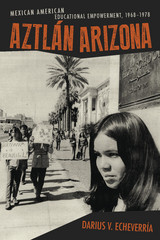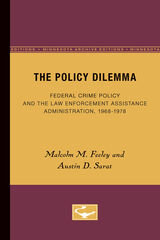2 books about 1968 - 1978

Aztlán Arizona
Mexican American Educational Empowerment, 1968–1978
Darius V. Echeverría
University of Arizona Press, 2014
Aztlán Arizona is a history of the Chicano Movement in Arizona in the 1960s and 1970s. Focusing on community and student activism in Phoenix and Tucson, Darius V. Echeverría ties the Arizona events to the larger Chicano and civil rights movements against the backdrop of broad societal shifts that occurred throughout the country. Arizona’s unique role in the movement came from its (public) schools, which were the primary source of Chicano activism against the inequities in the judicial, social, economic, medical, political, and educational arenas.
The word Aztlán, originally meaning the legendary ancestral home of the Nahua peoples of Mesoamerica, was adopted as a symbol of independence by Chicano/a activists during the movement of the 1960s and 1970s. In an era when poverty, prejudice, and considerable oppositional forces blighted the lives of roughly one-fifth of Arizonans, the author argues that understanding those societal realities is essential to defining the rise and power of the Chicano Movement.
The book illustrates how Mexican American communities fostered a togetherness that ultimately modified larger Arizona society by revamping the educational history of the region. The concluding chapter outlines key Mexican American individuals and organizations that became politically active in order to address Chicano educational concerns. This Chicano unity, reflected in student, parent, and community leadership organizations, helped break barriers, dispel the Mexican American inferiority concept, and create educational change that benefited all Arizonans.
No other scholar has examined the emergence of Chicano Movement politics and its related school reform efforts in Arizona. Echeverría’s thorough research, rich in scope and interpretation, is coupled with detailed and exact endnotes. The book helps readers understand the issues surrounding the Chicano Movement educational reform and ethnic identity. Equally important, the author shows how residual effects of these dynamics are still pertinent today in places such as Tucson.
The word Aztlán, originally meaning the legendary ancestral home of the Nahua peoples of Mesoamerica, was adopted as a symbol of independence by Chicano/a activists during the movement of the 1960s and 1970s. In an era when poverty, prejudice, and considerable oppositional forces blighted the lives of roughly one-fifth of Arizonans, the author argues that understanding those societal realities is essential to defining the rise and power of the Chicano Movement.
The book illustrates how Mexican American communities fostered a togetherness that ultimately modified larger Arizona society by revamping the educational history of the region. The concluding chapter outlines key Mexican American individuals and organizations that became politically active in order to address Chicano educational concerns. This Chicano unity, reflected in student, parent, and community leadership organizations, helped break barriers, dispel the Mexican American inferiority concept, and create educational change that benefited all Arizonans.
No other scholar has examined the emergence of Chicano Movement politics and its related school reform efforts in Arizona. Echeverría’s thorough research, rich in scope and interpretation, is coupled with detailed and exact endnotes. The book helps readers understand the issues surrounding the Chicano Movement educational reform and ethnic identity. Equally important, the author shows how residual effects of these dynamics are still pertinent today in places such as Tucson.
[more]

The Policy Dilemma
Federal Crime Policy and the Law Enforcement Assistance Administration, 1968-1978
Malcolm Feeley
University of Minnesota Press, 1981
The Policy Dilemma was first published in 1981.What can and should the federal government do to solve complex social problems? Malcolm M. Feeley and Austin D. Sarat address this question in the context of one important issue, the problem of crime. They examine a major federal program, the Law Enforcement Assistance Administration, and show how its operation is shaped and reflects what they call the “policy dilemma.” In response to the public’s demands, the government tries to do too much and promises more than it can deliver. While The Policy Dilemma is first of all a study of the federal government’s attempts to reform and improve criminal justice, it also examines broader issues of public policy making. The problems faced by the LEAA in crime control are shared by all governmental attempts to attack large, insufficiently defined social problems.The authors base their conclusions on extensive interviews with federal, state, and local officials responsible for implementing the Safe Streets Act, including members of ten state planning agencies. In conclusion, Feeley and Sarat summarize the problems of the Safe Streets Act and review congressional attempts at revision and reorganization. They argue that those attempts will only prolong the policy dilemma. The failure of the LEAA, they suggest, is not just a failure of administration but of concept and political theory.
[more]
READERS
Browse our collection.
PUBLISHERS
See BiblioVault's publisher services.
STUDENT SERVICES
Files for college accessibility offices.
UChicago Accessibility Resources
home | accessibility | search | about | contact us
BiblioVault ® 2001 - 2024
The University of Chicago Press









